Steel Trusses in Modern Construction
Architecture is always changing, adapting to conform to modern tastes, new challenges, and environmental considerations.
At Buffalo River Truss, we understand the advantages that steel trusses bring to modern construction, and today's blog will explore those advantages!
Let’s take a closer look.
Table of Contents
The Role of Trusses in Construction
If you don’t work in construction or architectural design, you might not be familiar with trusses and what they are. Simply put, trusses are crucial components in roofing that form the main frame, supporting the weight of other roofing materials.
Trusses are more intricate than rafters and are designed to support heavier loads over wider spaces. They consist of a top chord, a bottom chord, and webbing, forming triangular shapes to hold the structure together. Because of this quality, trusses are commonly used in large structures such as airports, riding arenas, or storage facilities. However, they can be used in other structures as well.
An Introduction to Steel Trusses
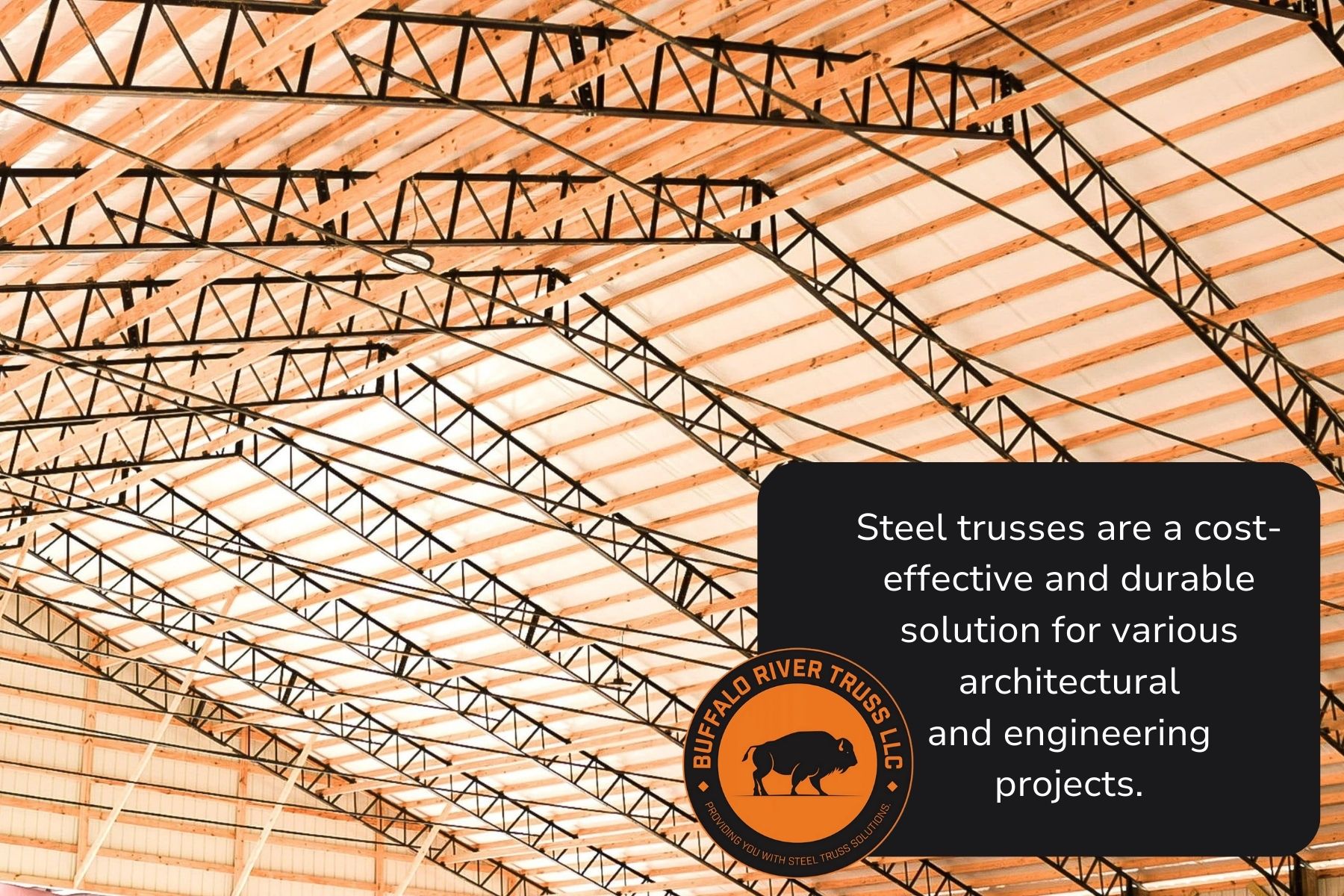
Buildings Best Suited for Steel Trusses
Steel trusses are well-suited for a variety of buildings due to their strength, durability, and versatility. Many types of structures benefit from the use of steel trusses, including:
- Industrial Buildings: Steel trusses are commonly employed in industrial structures such as warehouses, manufacturing facilities, and distribution centers. Their ability to span long distances without requiring extensive support columns allows for greater interior design flexibility and large open spaces.
- Commercial Buildings: Large commercial buildings, such as shopping malls, exhibition centers, and sports arenas, often utilize steel trusses. These trusses provide the necessary structural support for expansive roofs and open layouts.
- Agricultural Buildings: Steel trusses are popular for farm buildings like barns and storage facilities. Their strength and durability make them suitable for supporting roofs over wide areas, providing shelter for livestock, equipment, and crops.
- Bridges: Steel trusses are commonly used in the construction of bridges, where, again, their ability to span long distances is crucial. They offer a robust, cost-effective solution for supporting bridge decks and withstanding loads.
- Airport Hangars: Large structures like airport hangars, which require vast open spaces for accommodating aircraft, benefit from steel truss construction.
- Commercial and Residential Roofs: Steel trusses are increasingly being used in both commercial and residential construction for roofs. Their versatility allows for unique architectural designs while providing efficient load distribution and durability.
- Theaters and Auditoriums: Buildings with large auditorium spaces, such as theaters and concert halls, often utilize steel trusses to support the roof and create unobstructed views for the audience.
In summary, steel trusses are versatile and adaptable, making them suitable for various buildings across numerous sectors. Their strength, durability, and ability to span long distances without excessive support make them a preferred choice in many construction projects.
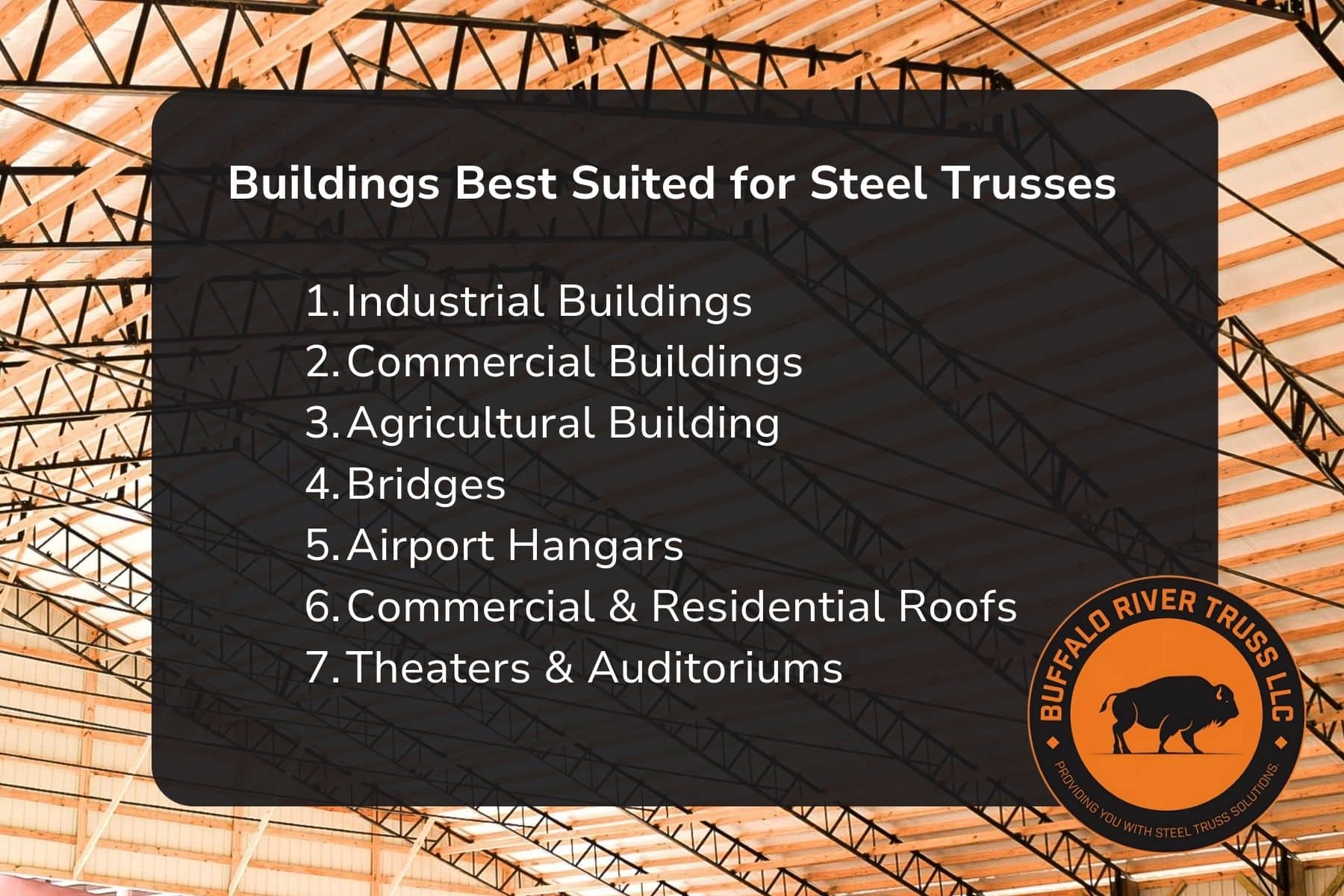
The Advantages of Steel Trusses
Steel trusses offer several advantages in construction, making them a popular choice for various structures. Here are some of the key benefits of using steel trusses:
-
Strength and Durability
As we’ve already highlighted, steel is known for its high strength and resistance to corrosion. This makes steel trusses suitable for supporting heavy loads and withstanding adverse weather conditions.
-
Lightweight
Despite their strength, steel trusses are relatively lightweight compared to some other construction materials like wood or concrete. This can simplify construction, reduce transportation costs, and provide more flexible design options.
-
Spanning Capability
As you probably noticed, there are a lot of big, open buildings on the list of those best suited for steel trusses. Steel trusses can span long distances without the need for intermediate supports. This makes them ideal for creating open and spacious interior spaces in buildings, such as large industrial facilities, gymnasiums, or exhibition halls.
-
Versatility in Design
Steel trusses offer design flexibility, allowing for a broader range of architectural shapes and configurations. This versatility enables architects and engineers to create innovative and aesthetically pleasing structures.
-
Speed of Construction
Steel trusses are often prefabricated, which means they are manufactured off-site and transported to the construction site for assembly. This can significantly reduce construction time and generally improve project efficiency.
-
Consistency and Precision
Steel trusses are manufactured to precise specifications, ensuring consistency in quality and performance. This precision can lead to more accurate construction, reducing the likelihood of errors, delays, and increased costs.
-
Fire Resistance
Fire can be a big concern when considering the safety of a building. Steel is inherently fire-resistant, greatly contributing to steel truss buildings' overall safety. Unlike some other materials, steel does not contribute to the spread of fire, providing an additional layer of protection.
-
Minimal Maintenance
Steel trusses require minimal maintenance over their lifespan. They resist pests, rot, and decay, contributing to long-term financial savings.
-
Recyclability
Steel is a highly recyclable material. At the end of a structure's life, steel components can be recycled and reused, making steel an environmentally friendly option.
-
Economic Benefits
While the initial cost of steel trusses may be higher than some alternatives, the long-term benefits, such as durability, low maintenance, and recyclability, can result in cost savings over the structure's life.
It's important to note that the suitability of steel trusses depends on a project's specific requirements and constraints. Consult with professional engineers for optimal designs and implementation.
Innovative Examples
Trusses are commonly used for large industrial or professional spaces, but there are also many innovative ways to incorporate steel trusses into residential designs! These designs usually tend toward minimalist architecture, often featuring industrial or modern flairs.
Here are some examples.
1. The Bridge House by Max Pritchard, Architect
The Bridge House is a home designed to span a small gorge and meandering creek. Supported on steel trusses much like a bridge, this home rests among the surrounding trees, an example of modern design and nature coexisting in harmony.
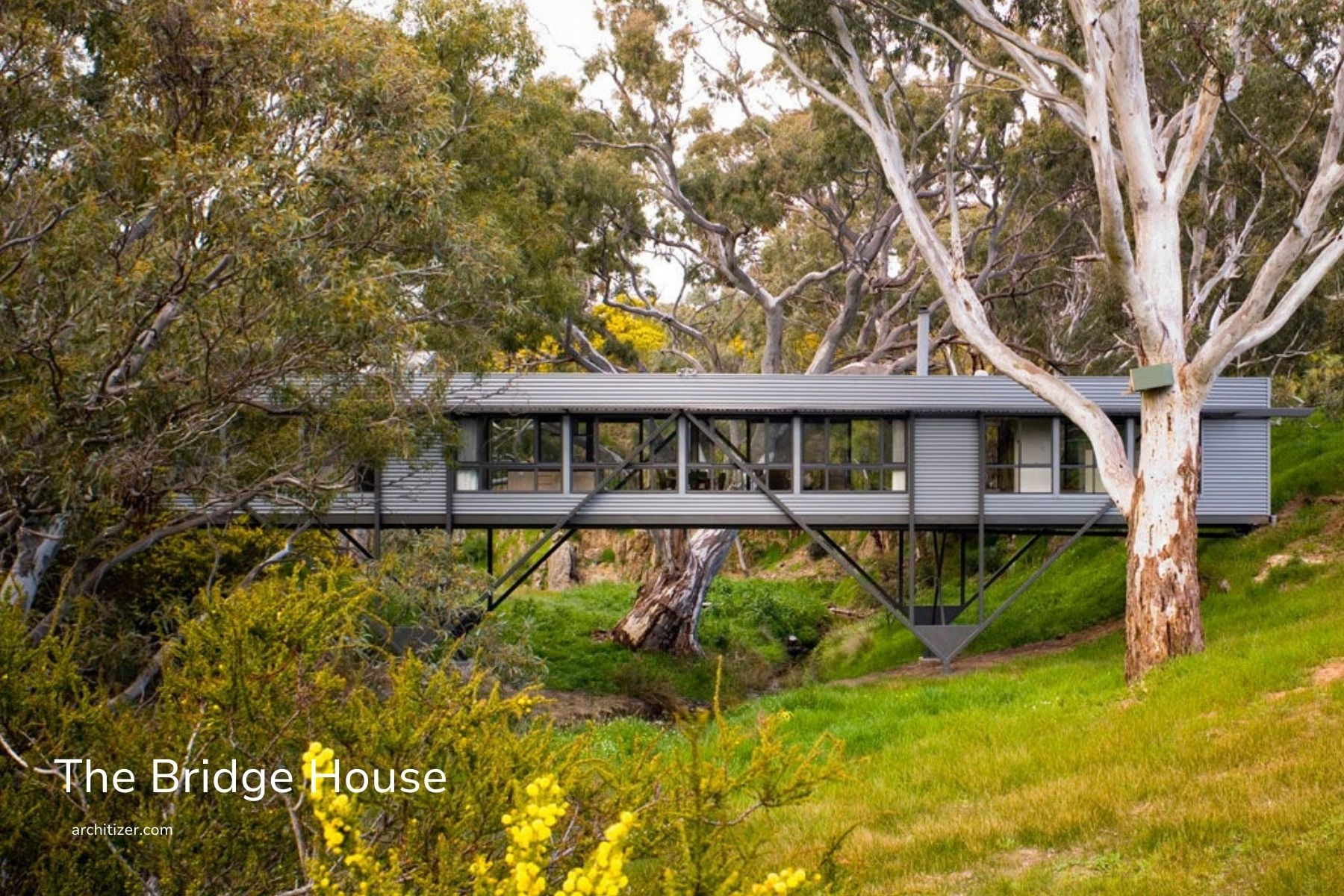
2. The Blanche Chalet by ACDF Architecture
Modern and airy, this home reflects the innovation that is possible when using steel trusses. The living area rests perpendicular to the rest of the house, supported by steel trusses. Built out from the main section, the living room appears to “float” from the second story and provides stunning 360-degree views of the surrounding landscape.
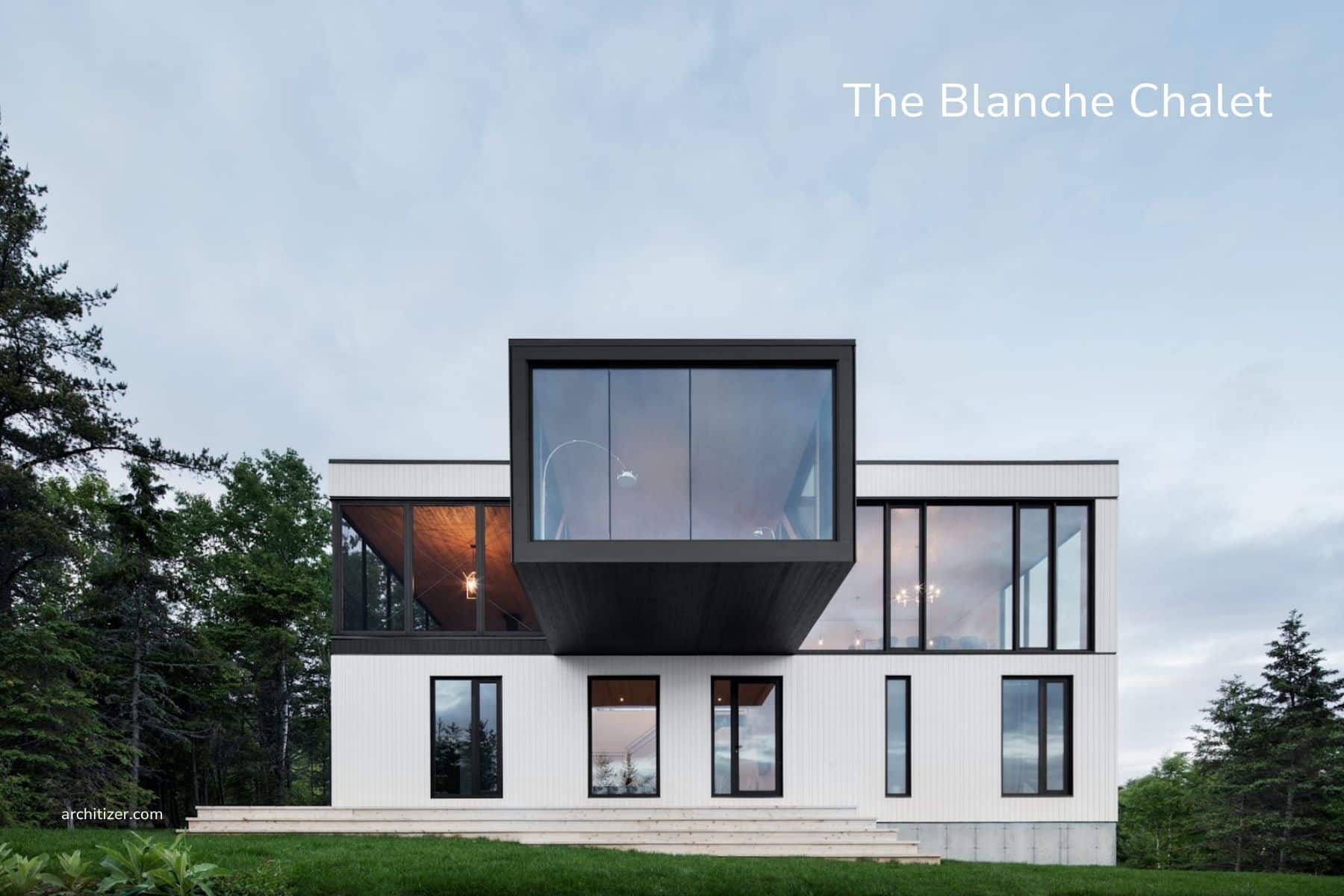
3. River Structures by Paul Hirzel, Architect
This project features two structures: vacation living quarters (The Flood Plain House) and a multipurpose area (The Fishing House). Built in a flood plain, this architect had unique challenges to overcome to design a viable structure. Ultimately, the Flood Plain House was elevated to be above the flood heights and supported on a 15-foot deep, steel Howe truss system. The Fishing House was designed with an inverted steel truss exoskeleton.
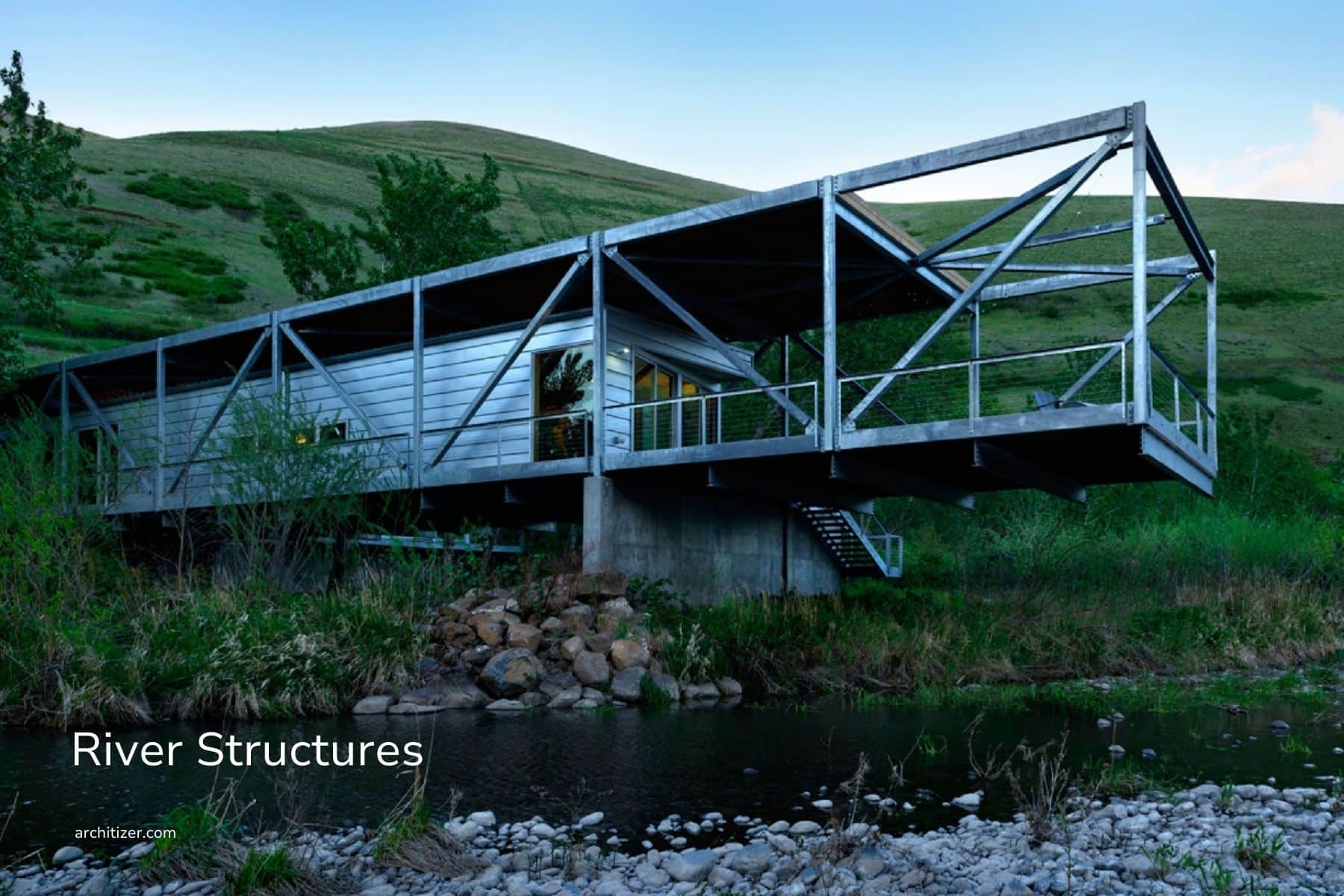
4. 4 in 1 House by Clavel Arquitectos
This truly unique home was designed to facilitate four distinct experiences: 1) leisure, 2) living, 3) autonomy, and 4) guests. The top floor (the guest experience space) features a 121-foot steel flat truss spanning the length of the home.
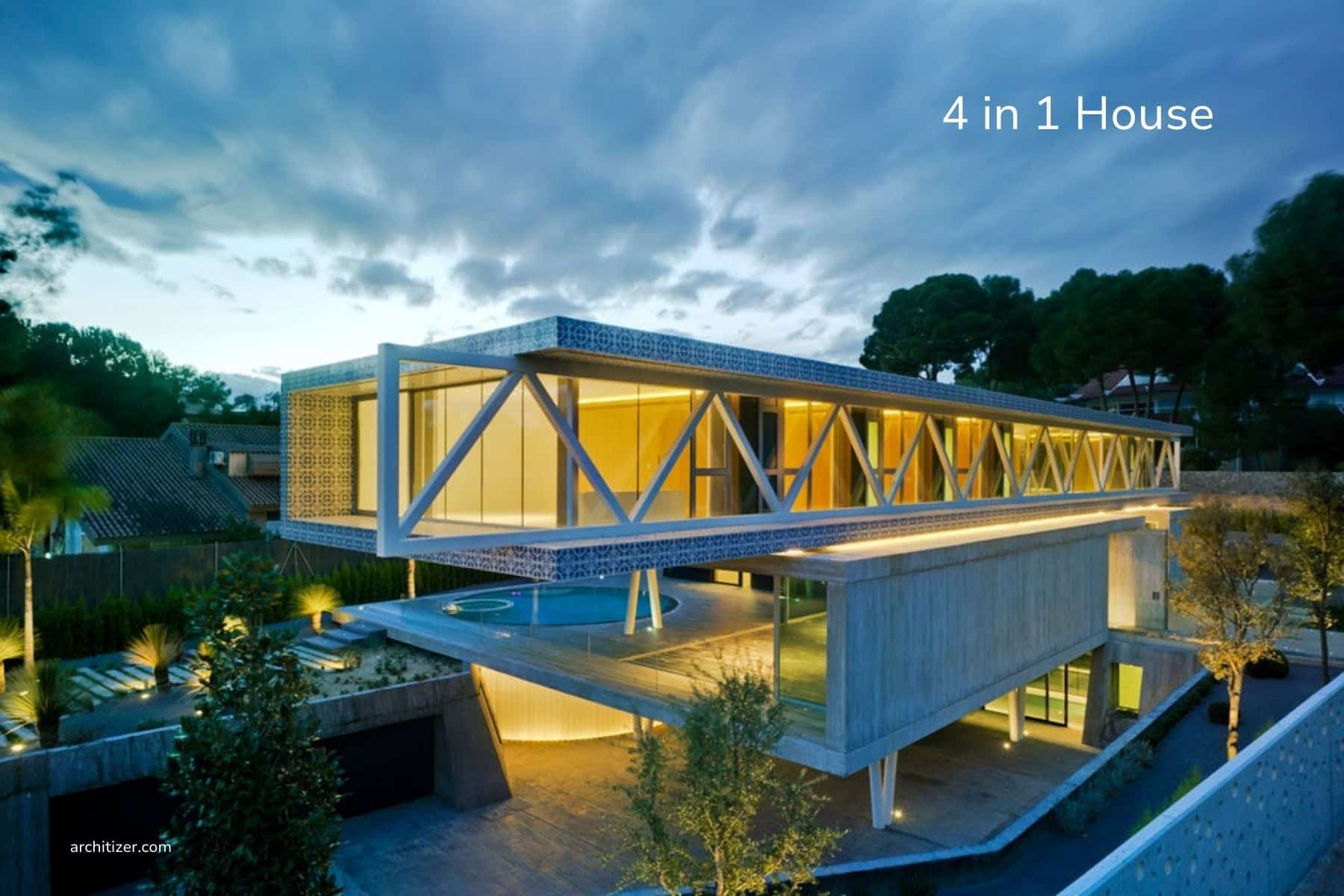
For a more warehouse-inspired use of steel trusses, browse this Pinterest board.
The Future
Steel trusses provide a sustainable way to construct innovative architectural designs, and their popularity is likely to continue.
At Buffalo River Truss, we build the highest quality steel trusses for your projects. We believe reliability is essential in construction, which is why we focus on:
- Stocking commonly used truss sizes to reduce waiting times
- Ensuring engineer-approved drawings for all standard trusses
- Regularly updating and adhering to code in our engineering drawings
- Providing trusses with lengths up to 100 feet and various roof pitches
- Prioritizing customer satisfaction by quickly resolving issues
- Maintaining a high-capacity production with stocked raw materials
If you’re working on a project, we’d love to be your steel truss provider!
We have numerous dealers across the country. Give us a call, and we’ll help determine what trusses you’ll need.
We’ll schedule your project and keep you posted on lead times, and we'll deliver the trusses to your project site.
Here’s to high-quality, innovative construction!






